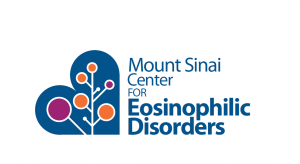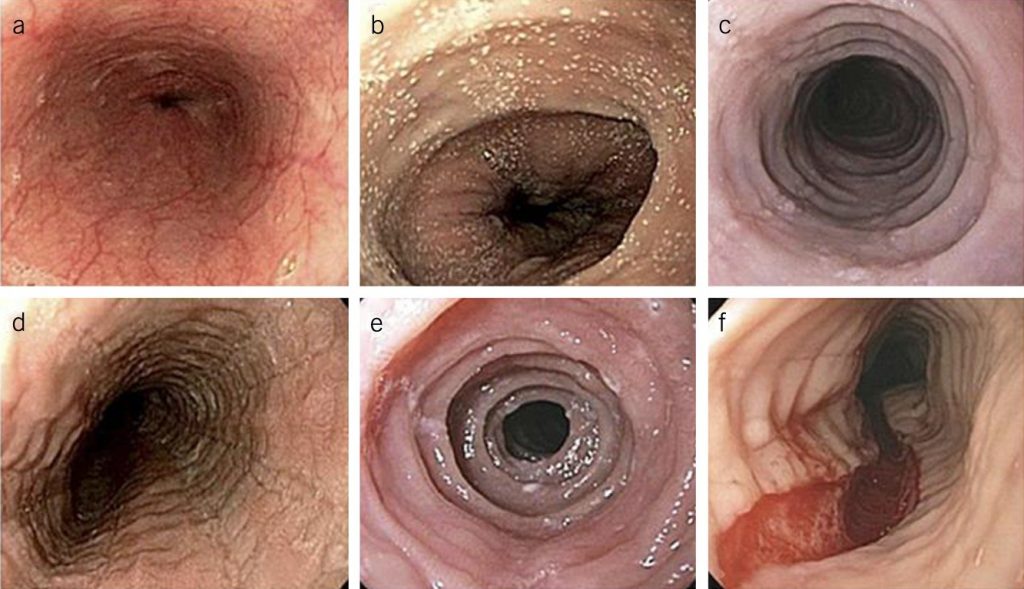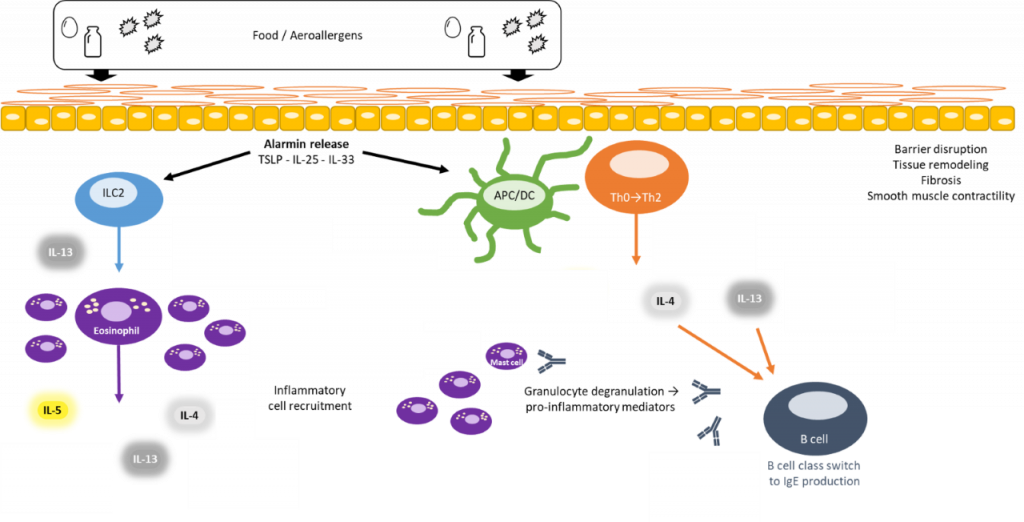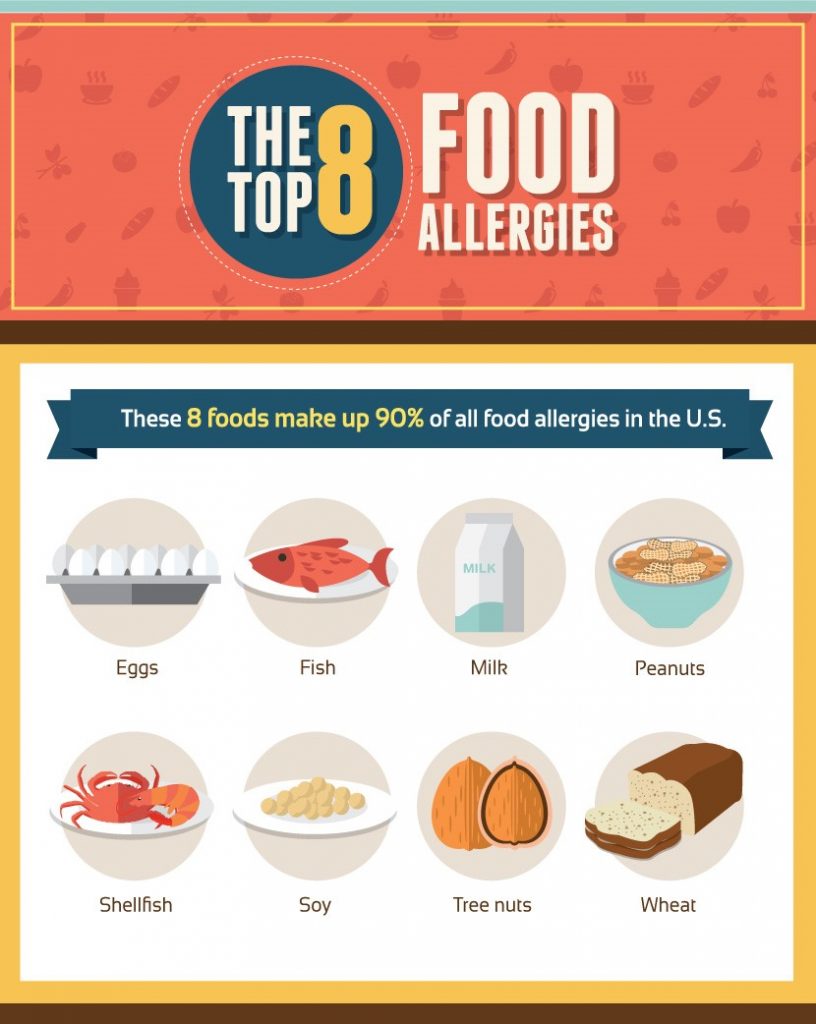Mount Sinai Center for Eosinophilic Disorders (MSCED)
About Us
The Mount Sinai Center for Eosinophilic Disorders (MSCED) is a comprehensive center that focuses on the diagnosis, treatment, and research of eosinophilic gastrointestinal disorders (EGIDs), including eosinophilic esophagitis (EoE), eosinophilic gastritis (EG), eosinophilic enteritis (EoN), and eosinophilic colitis (EoC). EGIDs are chronic inflammatory diseases of various parts of the gut, where one type of white blood cell, eosinophil, infiltrates the inner lining along with other immune cells, causing symptoms. EGIDs affect both children and adults.
Symptoms of EoE include difficulty swallowing foods and a history of food getting stuck in the esophagus, but at times can be non-specific such as stomach pain, gastroesophageal reflux symptoms, and vomiting, especially in children, leading to a misdiagnosis of acid-induced gastroesophageal reflux disease.
Patients with EGIDs below the esophagus, present with symptoms related to the organ affected. Examples include stomach pain and vomiting in patients with EoG and stomach pain, vomiting and diarrhea in patients with EGE and EoN. Diarrhea and blood in the stools can also occur in EoC. Since these symptoms can occur in other gastrointestinal diseases, patients with EGIDs are at times misdiagnosed as having other gastrointestinal diseases as well, such as acid-induced gastritis, irritable bowel syndrome, and inflammatory bowel disease. Children with EGIDs can suffer from failure to thrive, which is fortunately reversible with proper treatment of the underlying inflammation.
At the MSCED, we believe that patients with EGIDs have specific needs that are best treated by a team approach to management. Working closely together, our team will help the patient and family determine a diagnosis and set up a treatment plan which can include special diets, medications, and counseling. Dietary and feeding support are provided for every patient whose condition or treatment requires it. In addition, cutting-edge therapies are being provided at our center, mostly in the context of clinical research trials, for patients who do not respond to standard-of-care therapies or would like to stop these therapies because of side effects.
Since EGIDs are newly recognized diseases, there is not a lot of information as to what causes them. MSCED’s director, Dr. Mirna Chehade, MD, MPH, is one of the leading researchers of eosinophilic gastrointestinal disorders publishing a number of papers and spearheading a number of research projects to further understand how these diseases occur and explore novel therapies for EGIDs.
Clinical focus of the MSCED:
- Eosinophilic esophagitis
- Eosinophilic gastritis
- Eosinophilic enteritis
- Eosinophilic colitis
The MSCED works in conjunction with Jaffe Food Allergy Institute and Icahn School of Medicine at Mount Sinai.
What is Eosinophilic Esophagitis (EoE)?
Eosinophilic Esophagitis is the most common disease of a rare set of eosinophilic disorders. EoE occurs when the body responds to an environmental or dietary trigger, commonly cow’s milk, by producing an abundance of allergic cells called eosinophilia. These cells may travel through the body to a number of parts of the body, including the stomach, small intestines, or the esophagus, resulting in inflammation of that part. When in the esophagus, the eosinophils cause inflammation, irritation, and if left untreated, scarring and narrowing of the esophagus. All of which may lead to certain symptoms. These symptoms include dysphagia, food impactions, esophageal spasms, heartburn, regurgitation, loss of appetite, early satiety, nausea, vomiting, and abdominal pain. Additionally, the individual may develop precautionary eating habits such as prolonged chewing, taking smaller bites, and drinking with every bite. The diagram below demonstrates the disease in action.
It is important to noted that EoE may present differently in each individual, some may present with all of the symptoms described above, some may have a symptom entirely unique to themselves, and others may be entirely symptomatic from a clinical perspective. For this reason, as well as general management of the disease, annual or biannual (meaning once every two years), upper endoscopies are recommended to evaluate the state of the disease and the efficacy of the current treatment therapy. An endoscopy may reveal the disease is active despite no clinical correlation. The images below show effected esophaguses.

(EoE endoscopic features. (a) Normal esophagus, (b) white pinpoint exudate, (c) concentric rings and linear furrows, (d) linear furrows, (e) concentric rings, and (f) longitudinal tear. EoE, eosinophilic esophagitis. Picture and caption from Bredenoord, A.,…Chehade, M. et al. 2022.)
Currently, only dupilumab has been FDA approved to treat EoE in individuals 12 years old and older, by 300mg weekly subcutaneous injections. However, EoE has also been treated with swallowed topical corticosteroids such as Flovent and Budesonide. Certain proton pump-inhibitors have also been used to address acid-induced inflammation in EoE patients. Lastly, dietary therapy, including empirical and targeted elimination diets, have been used to manage eosinophilic esophagitis, both alone and in combination with the medications mentioned here. Often these diets include the removal of one or more of the 4 to 8 top allergens, including dairy, gluten, soy, egg, peanuts, tree nuts, fish, and shellfish.


